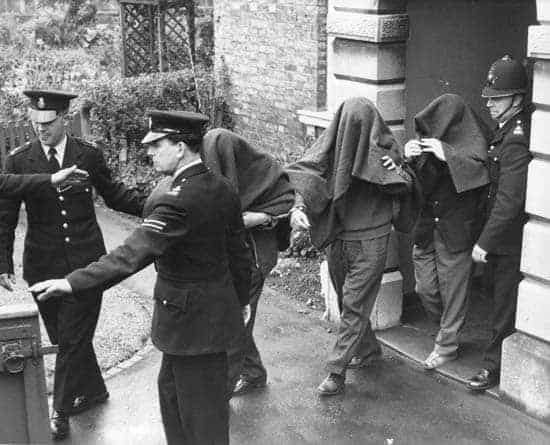The Great Train Robbery was dubbed ‘The Crime of the Century’ although, in reality, the perpetrators completely bungled the theft. There were up to 18 members of the gang that stole approximately £2.6 million from a Royal Mail Train at Bridego Railway Bridge in Buckinghamshire, England in 1963. Despite meticulous planning, every member of the group at the scene was captured, except for one unnamed man who was supposed to act as the replacement train driver. Only two informants escaped prison for their role in the robbery.
The Plan
Although there is uncertainty over who came up with the idea, most sources suggest a Salford postal worker called Patrick McKenna provided the information that piqued the interest of Buster Edwards and Gordon Goody. McKenna told the two career criminals about the large sums of money on board the Royal Mail trains and over the space of a few months, Edwards and Goody devised a plan. They were aided by Roy James, Charles Wilson, and Bruce Reynolds, with the latter, deemed the ‘mastermind’ behind the scheme.
Although the group was seasoned criminals, they had no experience in train robberies, so they sought the help of another London gang called The South Coast Raiders. This group included Richard Cordrey, a man capable of rigging track-side signals to bring a halt to the train. Other people such as Ronnie Biggs were added, and the total number of men involved in the actual robbery was 16.

The Robbery
On August 7, 1963, a 12 carriage Travelling Post Office (TPO) train started its journey from Glasgow to London. It left at 6:50 p.m. and was due to arrive at Euston Station at 3:59 a.m. on Thursday, August 8. The gang’s target was the High-Value Packages (HVP) coach which was the carriage just behind the engine. It would normally carry approximately £300,000, but as the previous weekend had been a Bank Holiday weekend, the total value was over £2.5 million.
At around 3 a.m., the driver, Jack Mills, saw what proved to be a false signal at Sears Crossing just past Leighton Buzzard. Mills stopped the train and his co-driver David Whitby left the diesel engine to contact the signalman to find out the issue. Whitby saw that cables from the line-side phone were cut, but as he returned to the train, he was accosted by members of the gang and tossed down the railway embankment.
Another masked man boarded the train and knocked Mills out with a blow to the head. The thieves separated the engine and the first two carriages containing the HVP. The plan involved driving the train another mile to Bridego Bridge where the money would be loaded onto Land Rovers which would then drive to a hideout.
However, the gang made a grievous error. They used a man known as ‘Stan Agate’ (real identity unknown) to drive the train, but upon entering, he realized the diesel engine train was far more complicated than the smaller ones he was used to driving. The panicked gang roused Mills to continue the journey. While staff in the two front carriages were harassed by the thieves, the rest of the employees in the remaining 10 carriages had no idea there was a robbery.

